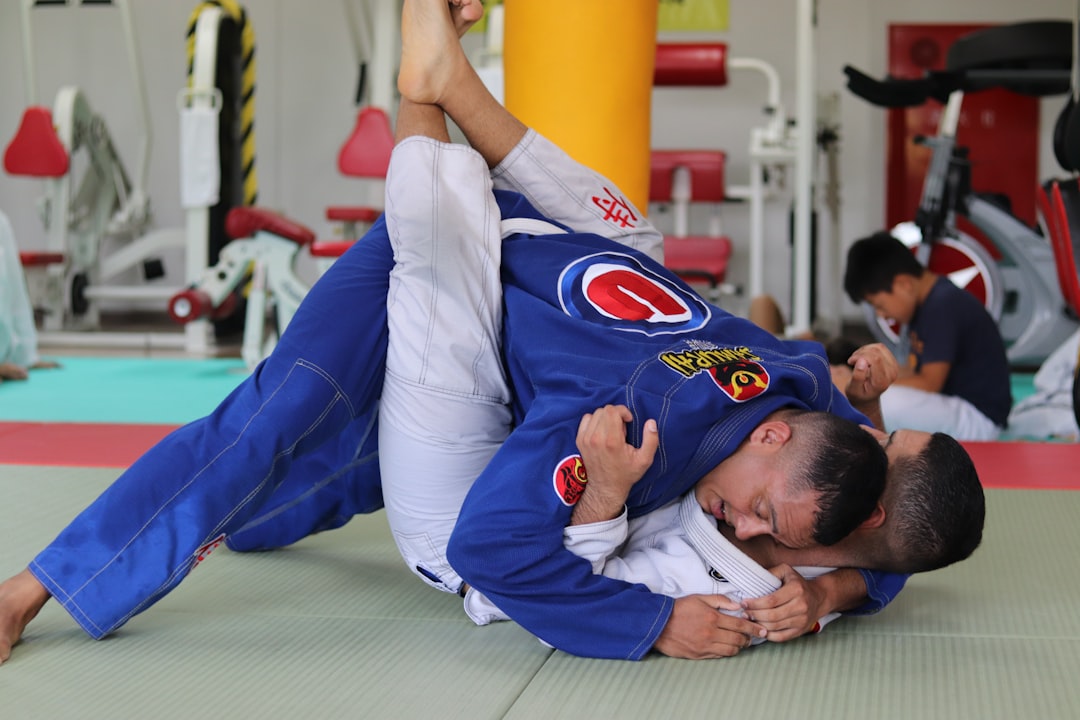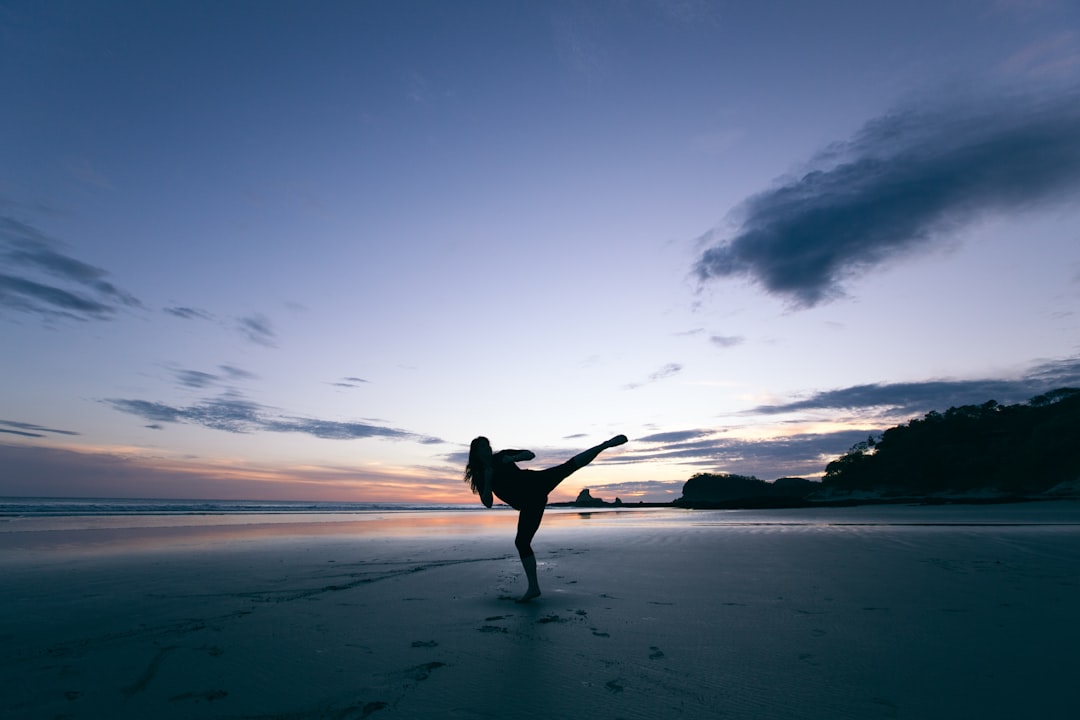Training karate effectively from home requires a well-fitted keikogi, or karate uniform, which is essential for both upholding the tradition of the martial art and facilitating the full range of motion necessary to perform techniques correctly. The right gi supports proper posture, ensures comfort, and allows for optimal movement. When selecting a gi, consider the material, weight, fit, and color carefully, as these factors influence not just your performance but also your respect for karate's discipline and traditions. A traditional white gi symbolizes humility and purity within the practice. The choice between cottons or polyesters should be informed by personal preference, the specific style of karate you practice, and the demands of your training regimen. Ensure that your chosen uniform is comfortable, durable, and allows for complete mobility, with fabric that remains colorfast over time for a consistent training experience whether at home or in a dojo setting.
Karate enthusiasts embarking on their training journey, whether in a dojo or at home, will find that the uniform they wear is more than mere attire—it’s an integral part of the practice. This article delves into the significance of karate uniforms, commonly known as ‘Gis’, and guides practitioners on selecting the right one for effective training. Discover how donning a proper Gi aligns with the principles of karate and enhances your martial arts experience. Whether you’re new to train karate home or seeking to refine your technique, understanding the essentials of these traditional garments will elevate your practice.
- The Essentials of Karate Training at Home: Donning the Proper Gi
- Karate Uniforms Explained: What Are They Called and How to Choose Yours for Effective Practice
The Essentials of Karate Training at Home: Donning the Proper Gi

Engaging in karate training at home requires dedication and the right environment to replicate the discipline one would experience in a dojo. A fundamental aspect of this training is donning the proper gi, which is the traditional karate uniform. The gi not only signifies respect for the martial art but also ensures that the practitioner has the appropriate range of motion necessary for executing various techniques. When training karate from home, it’s crucial to wear a gi that fits well and allows for complete freedom of movement. Does a comfortable and properly fitted gi contribute to effective karate practice at home? Absolutely, as it facilitates the correct posture and movement execution, which are vital for mastering karate techniques. Additionally, wearing a gi instills a sense of formality and discipline that aligns with the principles of karate, preparing the mind and body for rigorous training. Are there any specific considerations to keep in mind when selecting a gi for home training? Yes, consider the material, weight, fit, and color when choosing your gi. These factors will influence your comfort and ability to perform kata and kumite drills effectively during your karate training at home.
Karate Uniforms Explained: What Are They Called and How to Choose Yours for Effective Practice

When training karate at home or in a dojo, donning the appropriate attire is crucial to ensure comfort and focus during practice. Karate uniforms, known as “keikogi” in Japanese, are designed to provide both functionality and respect for the martial art’s traditions. These garments are essential for practitioners as they facilitate movement, allowing for a full range of motion necessary for various karate techniques. Choosing the right keikogi involves considering factors such as fit, durability, and material. Is the uniform you’re considering made of a breathable cotton or a more durable polyester? Does it offer flexibility without being too loose or too tight? These aspects are important when selecting a keikogi for effective practice. Additionally, it’s worth noting the traditional white color of these uniforms, which symbolizes humility and purity within the discipline of karate.
Selecting your keikogi can also be influenced by personal preference and the specific style of karate you are training in. For instance, Shotokan practitioners might prefer a uniform with a slightly heavier weave for more coverage and durability during rigorous training sessions. On the other hand, if you’re practicing a softer style like Goju-ryu, a lighter keikogi might be more suitable. Regardless of the style, it’s essential to choose a uniform that feels comfortable against your skin and allows for complete mobility. How will the fabric hold up over time? Will the color remain bright after multiple washes? These are all important questions to consider when selecting your karate uniform for home training or dojo practice.
In wrapping up our exploration of karate practice, whether in a dojo or training karate at home, it’s clear that donning the correct attire is key to an effective session. A karate gi serves as more than mere clothing; it represents respect for the art and readiness for training. For those who train karate at home, selecting a well-fitted, quality gi is essential not just for performance but also for honoring the tradition of this martial art. Whether you’re an experienced practitioner or new to the discipline, ensuring you have the right uniform can make a significant difference in your practice. Remember to choose a gi that suits both your needs and the specific style of karate you are practicing, as each has its unique requirements. With the right gi, you’re set to engage in the rigorous and rewarding training that karate offers.
